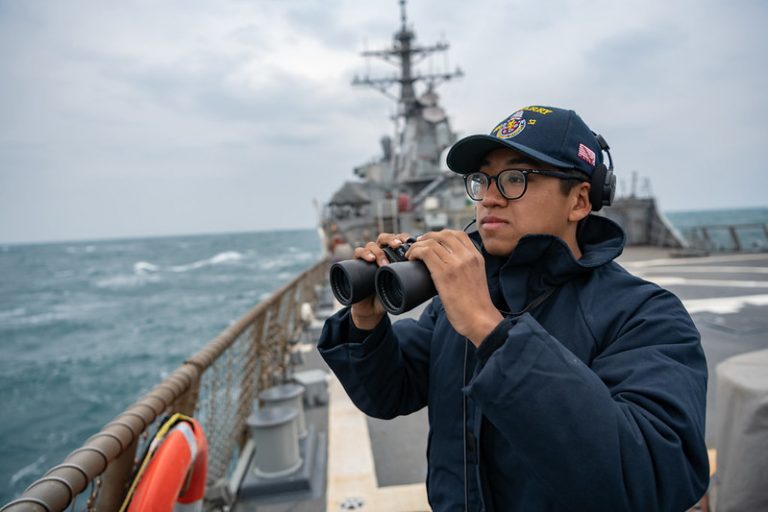Warships from the U.S. and Canadian navies traversed the Taiwan Strait together last week. With heightened tensions between the Chinese Communist Party (CCP) and the Republic of China (ROC), centered in Taiwan, the passage of foreign vessels triggered the usual response from Beijing, which accused the western nations of endangering the “peace” of the region.
‘Commitment’ to Taiwan
According to a report by Reuters, the ships that passed through the strait were the USS Dewey, an Arleigh Burke-class guided-missile destroyer of the U.S. Navy, and the HMCS Winnipeg, a Canadian frigate. Both ships passed through the open waterway between the mainland and the island on Thursday and Friday.
“Dewey’s and Winnipeg’s transit through the Taiwan Strait demonstrates the commitment of the United States and our allies and partners to a free and open Indo-Pacific,” the U.S. military said.
The U.S. has been regularly sending what they call “freedom of navigation patrols” through the Taiwan Strait on a monthly basis, angering Beijing. The transit of the two warships followed an earlier journey by the British warship HMS Richmond on Sept. 27, which was making its way to Vietnam.
While the transit of the USS Dewey is the tenth conducted by the U.S. in 2021, it was the first performed with an ally.
Success
You are now signed up for our newsletter
Success
Check your email to complete sign up
Canada and Taiwan recently announced their intentions to strengthen educational cooperation between the countries in a virtual meeting on Oct. 6. The ROC’s application to join the Comprehensive and Progressive Agreement for Trans-Pacific Partnership (CPTPP) was made in hopes of bringing “stability and prosperity” to the Indo-Pacific region.
A ‘breakthrough’
Analyst Liu Weidong from the Chinese Academy of Social Sciences told South China Morning Post (SCMP) that the joint transit of the two ships was a “breakthrough,” accusing the U.S. of banding countries together against the CCP.
“Although the joint transit made by U.S. and Canadian warships itself was limited in both power and scale, it reflected a significant shift in the U.S. strategic approach in countering China,” he said. “It’s a breakthrough, meaning the U.S. has succeeded in convincing more countries to go against China in this sensitive waterway.”
Liu also pointed out that the movement against China is also occurring in the South China Sea, as several other nations are sending their own vessels to reinforce the region.
Enraging Beijing
Once again, Beijing responded aggressively to the trip made by the U.S. and Canadian ships. The communist government accused Washington of “stoking regional tensions,” despite the fact that the CCP has openly declared its militaristic intentions to control Taiwan by concentrating its own forces around the island.
The CCP-controlled People’s Liberation Army’s (PLA) Eastern Theatre Command stated that its forces watched the passing ships closely, “standing guard” throughout the waterway.
“The United States and Canada colluded to provoke and stir up trouble… seriously jeopardising peace and stability of the Taiwan Strait,” it said. “Taiwan is part of Chinese territory. Theatre forces always maintain a high level of alert and resolutely counter all threats and provocations.”
While tensions are high, there has been relatively no conflict between the PLA and the ROC. However, throughout the year, the PLA has been sending planes into the southwestern corner of Taiwan’s air defence identification zone (ADIZ). On Oct. 17, Taiwan’s defence ministry reported three aircraft intruded into the ADIZ.
Despite the release of Meng Wanzhou, CFO of communist-run Huawei, in Canada, as well as Beijing’s release of two Canadians, relations between China and Canada have been rocky. The ruling Liberal Party in Canada has a “more moderate stance” towards China, as opposed to the Conservative Party, which is more critical of the CCP.
















